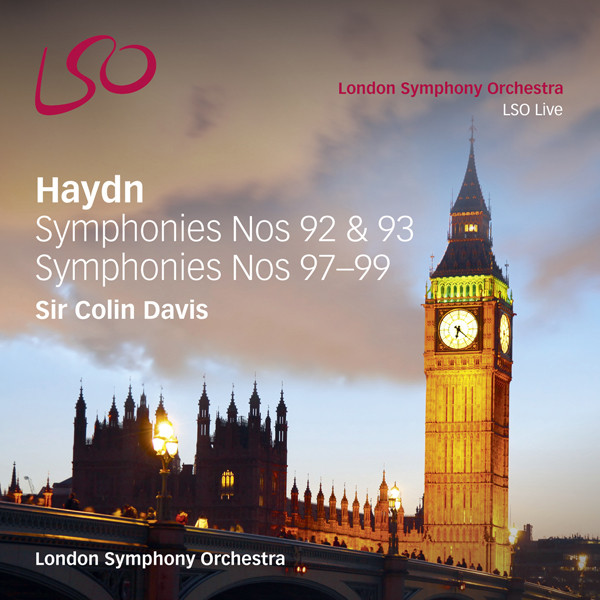
Franz Joseph Haydn – Symphonies Nos. 92 & 93, 97-99 – Sir Colin Davis, London Symphony Orchestra (2014)
FLAC (tracks) 24 bit/96 kHz | Time – 02:12:47 minutes | 2,68 GB
Official Digital Download – Source: Qobuz | Digital booklet
Recorded live at the Barbican, Symphony 92 – 2 & 4 October 2011, Symphony 93 – 11 & 13 December 2011, Symphony 97 – 6 & 9 May 2010, Symphony 98 – 4 & 6 December 2011, Symphony 99 – 26 May & 2 June 2011
Сomposer: Franz Joseph Haydn (1732-1809)
Artist: London Symphony Orchestra, Sir Colin Davis
Title: Haydn – Symphonies Nos. 92 & 93, 97-99
The late Sir Colin Davis and the London Symphony Orchestra present a collection of Haydn’s expressive and resplendent London Symphonies alongside the spirited and melodic Oxford Symphony.
Sir Colin Davis was long recognised as a pre-eminent Haydn interpreter. During his Indian summer with the orchestra he recorded both Die Schöpfung (The Creation) and Die Jahreszeiten (The Seasons) for LSO Live. These symphonies presented here were recorded in 2011 during this same period, and make for revelatory listening.
Back in the late 1970s and early 1980s Sir Coin Davis recorded all twelve of Haydn’s ‘London’ symphonies for Philips with the Royal Concertgebouw Orchestra. They were reissued as two-disc sets in the Philips Duo series some time ago (442 614-2 and 442 614-2) and I think they are still available. Here we have live recordings of five late Haydn symphonies taken from performances given towards the end of his career. I’d argue that you should acquire this pair of new discs even if you have the RCO recordings – or intend to acquire them while they’re still obtainable. For one thing the new set includes the ‘Oxford’ symphony, which wasn’t recorded in Amsterdam. More significantly, there is an important difference between the two sets and that’s all to do with the sound of the respective orchestras.
I think I’m correct in believing that the Philips performances were recorded under studio conditions. That presumably means that the Concertgebouw was empty. Certainly the Philips recordings appear to have been set down in a larger acoustic than that of the Barbican and I wonder if the band may have been slightly larger – perhaps one extra desk of strings per section – than was the case in London. The acoustic of the Barbican has sometimes come in for criticism – though I’ve usually found it satisfactory at the very least. Here the tighter acoustic as compared with the Concertgebouw pays dividends. The LSO Live sound is by no means oppressive but the players seem to be a bit closer and the performances are just a bit more immediate. I have absolutely no intention of disposing of my copies of the RCO sets, which are very distinguished, but I’m delighted to have these new performances to set beside them.
There may be a few nuances that are different as between the Amsterdam and London performances but what unites them is the guiding hand of a perceptive and above all stylish Haydn conductor. These performances just feel right. In both Amsterdam and London Davis benefited from top-drawer orchestral playing.
The ‘Oxford’ Symphony is completely successful. The Allegro spirituoso is indeed spirited yet, as we shall find so often in these performances, Davis manages to invest fast music with energy and momentum without ever rushing it off its feet. The slow movement is beautifully shaped and Sir Colin earns our thanks firstly by not treating the Adagio as an easy-paced andante – yet the music is not paced too slowly – and then by making it wonderfully apparent that there’s a second word in Haydn’s tempo indication: cantabile. The LSO’s silky strings and lovely woodwinds ensure that the music genuinely sings. In the words of annotator Lindsay Kemp the third movement is ‘grand but graceful’, which is how it sounds here, and I lovely the quirkily offbeat horns in the trio. Haydn’s brilliant finale twinkles and scampers. My colleague, Mark Berry reviewed one of the concerts from which this performance has been edited for Seen and Heard.
The other four performances are at the same high level of accomplishment. In number 93 I admired the vigour and rhythmic energy that Davis imparts in the first movement while the fresh and inventive finale is given a high-spirited, lively reading. In number 97, which was reviewed for Seen and Heard by Geoff Diggines I like the apposite mixture of grace and energy that Davis brings to the opening Allegro assai – I think this performance is a bit more lithe than his Concertgebouw reading. I love the delectable woodwind contributions in the trio of the third movement while there’s lots of brio in the way the LSO delivers the sparkling finale.
Turning to number 98 Davis’s excellent account of the first movement catches the grandeur without ever so much as flirting with sluggish speed. The theme of the Adagio has more than a hint of ‘God Save the Queen’ to it; was this intentional? Davis gets just the right degree of solemnity here and the phrasing is exquisite. The Menuetto is sprightly – and who could resist the delectable bassoon playing in the trio? The witty finale is urbane.
Finally we hear number 99 from a pair of concerts, one of which was reviewed for Seen and Heard by Gavin Dixon. This symphony has the most extended introduction of all the works in this set and Davis’s treatment is properly spacious. Thereafter the Vivace assai bowls along with great momentum, yet even at this pace elegance is not sacrificed. Davis gives the music of the Adagio the correct amount of space and the LSO woodwinds are on top form. As Lindsay Kemp points out the Menuetto contains some anticipations of the Beethovenian scherzo – though the music is still very recognisably by Haydn; the elegant trio could only be by Haydn. The concise and extrovert finale fairly teems with life in this performance.
I’m intrigued to note that all the concerts which were reviewed by Seen and Heard colleagues included one of the Nielsen symphonies. I think it’s probably a fair bet, then, that the other concerts were also part of Sir Coin’s Nielsen series in which case these discs nicely complement his Nielsen cycle on LSO Live.
This is a richly rewarding and highly enjoyable set. The playing of the LSO is consistently excellent and one gets the distinct impression that the players were enjoying themselves – as well they might. Sir Colin’s way with Haydn is cultivated and invariably satisfying. Just recently Mark Berry has reviewed a fine Salzburg performance of Die Schöpfung led by another master conductor of Haydn and much else, Bernard Haitink. In the course of that review Mark referred to the Haydn performances of Sir Colin, of which he heard many, and referred to ‘Davis’s inimitable way with orchestral Haydn, encompassing not only great musical wisdom but a sense of fun.’ I entirely agree with that judgement to which I’d only add that Davis possessed a seemingly innate elegance and sense of line in music like this. All these qualities are consistently on display here and these splendid performances are self-recommending.
The SACD sound is good. Lindsay Kemp’s notes are succinct but useful. There’s a degree of repetition in them which stems, I suspect, from the fact that they were written for the individual concerts at which these performances were given nut that’s of little consequence.
These are a fine reminder of the stylish musicality of Sir Coin Davis. Two hours listening to late Haydn symphonies under his perceptive guidance is time very well spent. I hope that LSO Live have more performances ‘in the can’ which they will be able to issue in due course. In particular, I noted that there were some enticing, previously unissued recordings that appeared recently in their 13-disc commemorative issue. These included the Berlioz Te Deum and Vaughan Williams’ Fourth Symphony. Individual releases of those performances would be more than welcome. -John Quinn, MusicWeb International
Tracklist:
Disc 1
Symphony No 92 in G major
1 i. Adagio – Allegro spiritoso 8’00’’
2 ii. Adagio cantabile 7’28’’
3 iii. Menuetto: Allegretto 5’50’’
4 iv. Presto 6’06’’
Symphony No 93 in D major
5 i. Adagio – Allegro assai 8’01’’
6 ii. Largo cantabile 5’34’’
7 iii. Menuetto: Allegro 3’57’’
8 iv. Finale: Presto ma non troppo 5’34’’
Symphony No 97 in C major
9 i. Adagio – Allegro assai 8’46’’
10 ii. Adagio ma non troppo 7’47’’
11 iii. Menuetto e Trio: Allegretto 4’10’’
12 iv. Finale: Presto assai 5’36’’
Disc 2
Symphony No 98 in B flat major
1 i. Adagio – Allegro 8’53’’
2 ii. Adagio 6’30’’
3 iii. Menuetto: Presto 5’14’’
4 iv. Finale: Presto 6’41’’
Symphony No 99 in E flat major
5 i. Adagio – Vivace assai 8’53’’
6 ii. Adagio 9’26’’
7 iii. Menuetto e Trio: Allegretto 5’34’’
8 iv. Finale: Vivace 4’54’’
Personnel:
London Symphony Orchestra
Sir Colin Davis, conductor
Download:
mqs.link_HaydnSymphniesNs.92939799LSClinDavis20149624.part1.rar
mqs.link_HaydnSymphniesNs.92939799LSClinDavis20149624.part2.rar
mqs.link_HaydnSymphniesNs.92939799LSClinDavis20149624.part3.rar



















![Carl Nielsen - Symphonies Nos. 1-6 - London Symphony Orchestra, Sir Colin Davis (2015) [Blu-Ray Pure Audio Disc + DSF Stereo DSD64/2.82MHz] Carl Nielsen - Symphonies Nos. 1-6 - London Symphony Orchestra, Sir Colin Davis (2015) [Blu-Ray Pure Audio Disc + DSF Stereo DSD64/2.82MHz]](https://getimg.link/images/imgimgimg/uploads/2015/09/Wnf48VE.jpg)
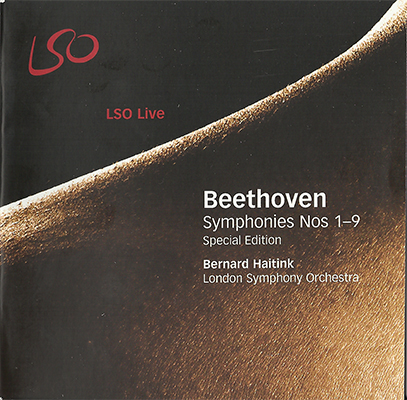
![Sir Simon Rattle, Berliner Philharmoniker - Jean Sibelius - Symphonies Nos. 1-7 (2015) [Blu-ray Disc + Pure Audio Blu-ray Disc + FLAC 5.1 24bit/192kHz] Sir Simon Rattle, Berliner Philharmoniker - Jean Sibelius - Symphonies Nos. 1-7 (2015) [Blu-ray Disc + Pure Audio Blu-ray Disc + FLAC 5.1 24bit/192kHz]](https://getimg.link/images/imgimgimg/uploads/2016/02/htbd2jO.jpg)
![Haydn & Scarlatti - Chiaro E Scuro - Olivier Cave (2015) [Qobuz FLAC 24bit/96kHz] Haydn & Scarlatti - Chiaro E Scuro - Olivier Cave (2015) [Qobuz FLAC 24bit/96kHz]](https://getimg.link/images/imgimgimg/uploads/2017/05/g3L1lJh.jpg)
![Maria Callas - Remastered The Complete Studio Recordings 1949-1969 (2014) [Qobuz FLAC 24bit/96kHz] Maria Callas - Remastered The Complete Studio Recordings 1949-1969 (2014) [Qobuz FLAC 24bit/96kHz]](https://getimg.link/images/imgimgimg/uploads/2018/12/Vw7IHlv-1.jpg)
![Andras Schiff - Beethoven: Diabelli-Variationen, Op. 120 (2013) [HDTracks FLAC 24bit/44,1kHz] Andras Schiff - Beethoven: Diabelli-Variationen, Op. 120 (2013) [HDTracks FLAC 24bit/44,1kHz]](https://getimg.link/images/imgimgimg/uploads/2017/02/Zuaqo6e.jpg)
![Colin Currie & Steve Reich - Live at Fondation Louis Vuitton (2019) [FLAC 24bit/48kHz] Colin Currie & Steve Reich - Live at Fondation Louis Vuitton (2019) [FLAC 24bit/48kHz]](https://getimg.link/images/imgimgimg/uploads/2019/11/E9jxBLR.jpg)
![London Symphony Orchestra & Sir Simon Rattle and others - Bernstein: Wonderful Town (Bonus Track Version) (2018) [FLAC 24bit/96kHz] London Symphony Orchestra & Sir Simon Rattle and others - Bernstein: Wonderful Town (Bonus Track Version) (2018) [FLAC 24bit/96kHz]](https://getimg.link/images/imgimgimg/uploads/2019/02/1TyLZXw.jpg)
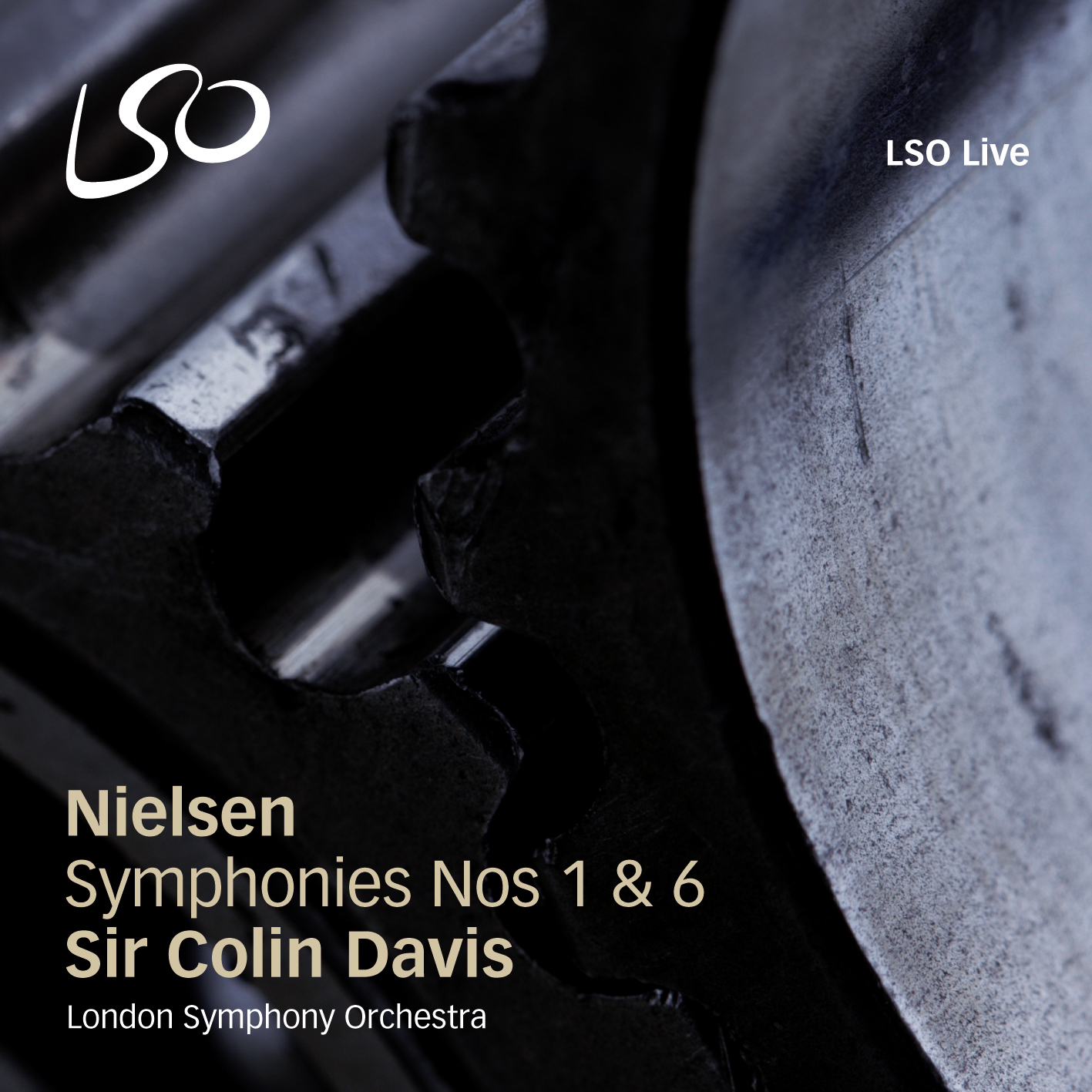
![Franz Joseph Haydn - Symphonies Nos.78-81 - Accademia Bizantina, Ottavio Dantone (2016) [HighResAudio FLAC 24bit/96kHz] Franz Joseph Haydn - Symphonies Nos.78-81 - Accademia Bizantina, Ottavio Dantone (2016) [HighResAudio FLAC 24bit/96kHz]](https://getimg.link/images/imgimgimg/uploads/2017/03/DaddWns.jpg)
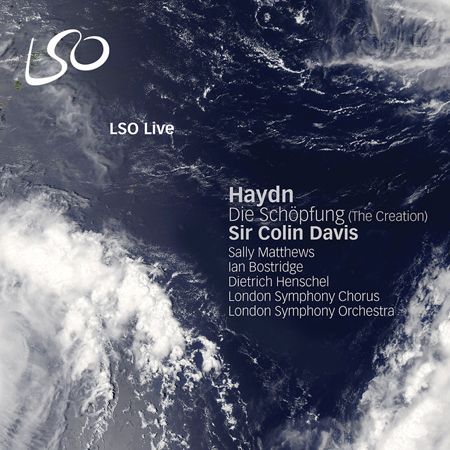
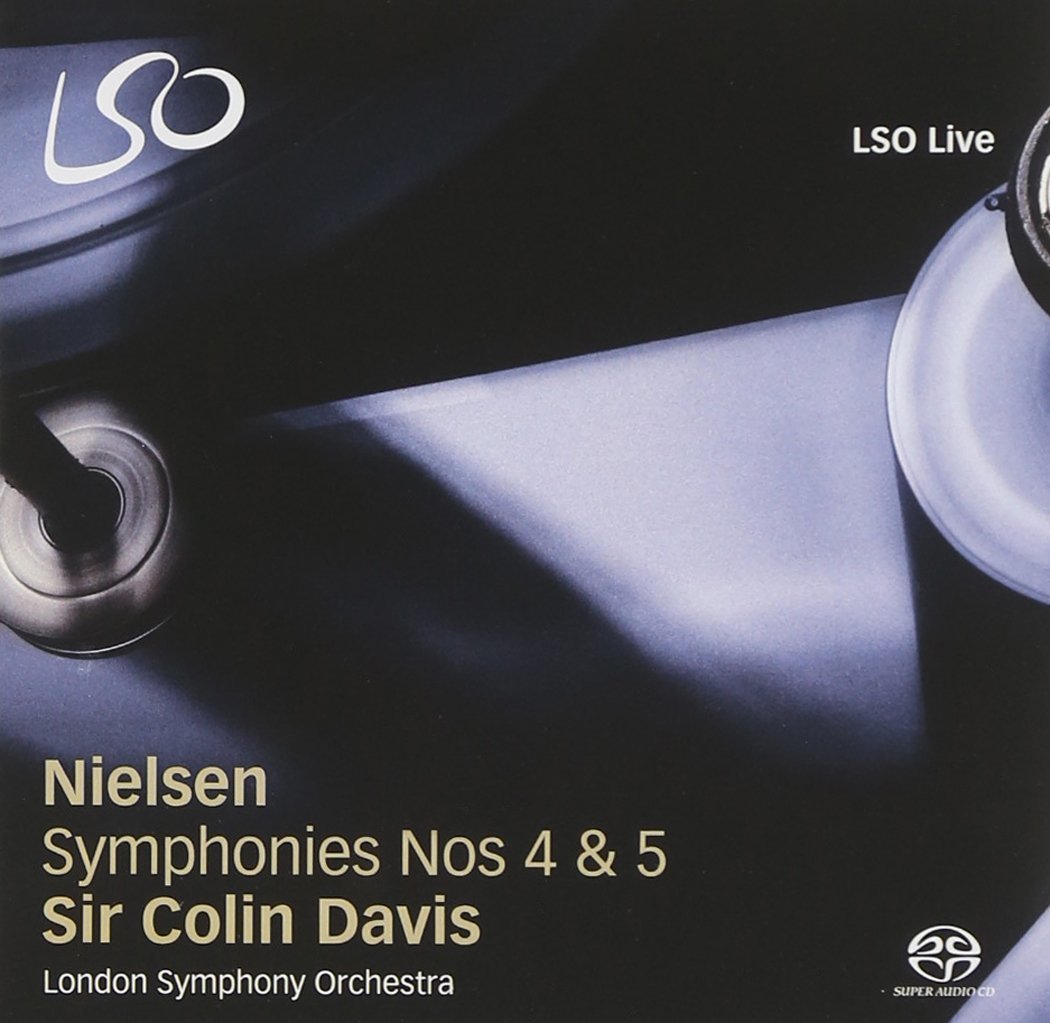
![Alison Balsom - Haydn & Hummel Trumpet Concertos (2008/2014) [HighResAudio 24bit/44.1kHz] Alison Balsom - Haydn & Hummel Trumpet Concertos (2008/2014) [HighResAudio 24bit/44.1kHz]](https://getimg.link/images/imgimgimg/uploads/2015/09/tOe6I15.jpg)
![Haydn 2032, Vol. 1: La Passione - Giovanni Antonini, Il Giardino Armonico (2014) [Qobuz FLAC 24bit/96kHz] Haydn 2032, Vol. 1: La Passione - Giovanni Antonini, Il Giardino Armonico (2014) [Qobuz FLAC 24bit/96kHz]](https://getimg.link/images/imgimgimg/uploads/2017/11/g80PsHs.jpg)
![Haydn 2032, Vol. 2: Il filosofo - Il Giardino Armonico, Giovanni Antonini (2015) [Qobuz FLAC 24bit/96kHz] Haydn 2032, Vol. 2: Il filosofo - Il Giardino Armonico, Giovanni Antonini (2015) [Qobuz FLAC 24bit/96kHz]](https://getimg.link/images/imgimgimg/uploads/2017/11/wLTXJCH.jpg)